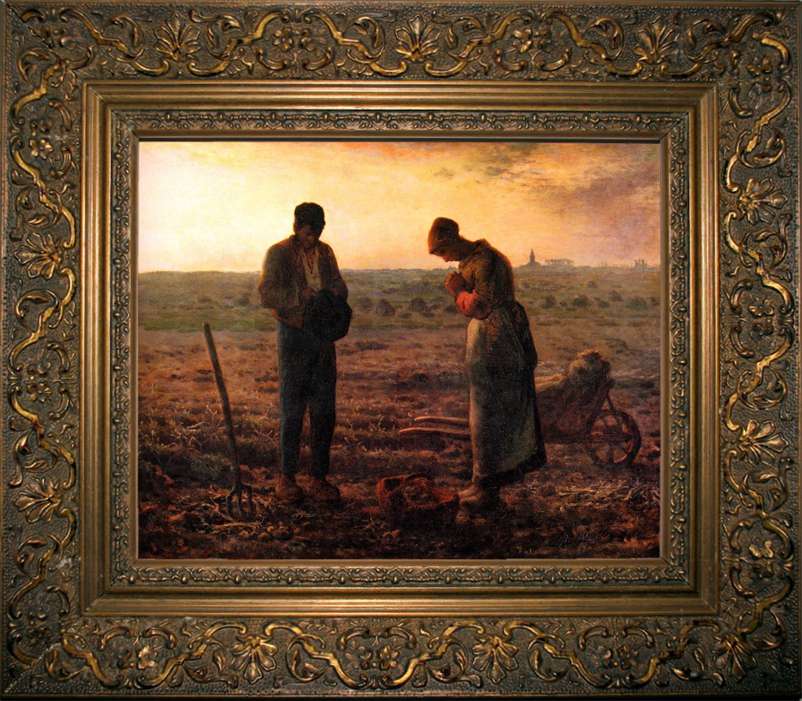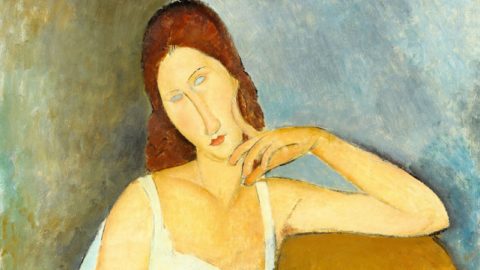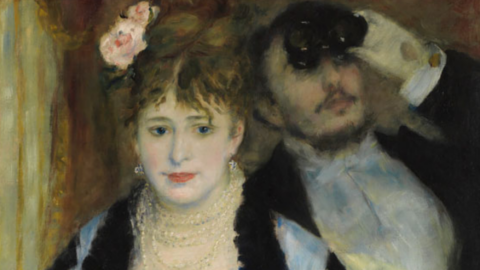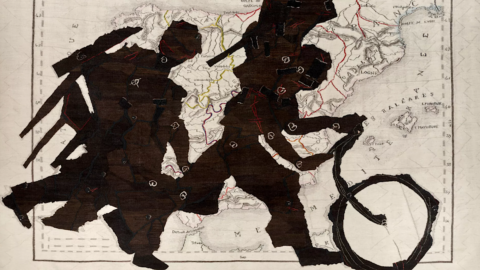The resale right (droit de suite), which exists today in all the Member States of the European Union and in almost fifty other countries of the world, is a 100% French creation, dating back to the law of May 20, 1920. It is often remembered that it was born out of the emotion provoked by the fate of L'Angélus, a famous painting by the painter Jean-François Millet, which sold for 1.000 francs during his lifetime and whose value continued to grow after his death, enriching the sellers while the his heirs lived in poverty.

Indeed, it is a concern for equity that prompted the legislator to create this new copyright: unlike other artists, writers or musicians, for example, plastic artists do not benefit directly from their success but when they have divested before that their rating would go up. The resale right therefore allows you to maintain the bond that unites the artist to his work. While striving to preserve the spirit of equity that presided over its creation, several reforms have shaped the current droit de suite system.
In international law, Article 14ter of the Berne Convention for the Protection of Literary and Artistic Works approved the principle of the droit de suite in 1948, but its implementation is only optional and subject to the principle of reciprocity, which limits its greatly the scope and creates a very prejudicial situation for the artists. In fact, if it proceeds from year to year, a large number of countries still do not apply it, including the two strongholds of the art market, even if projects in the United States have since been under discussion. for some time now and that China has officially spoken out in favor of its introduction. However, the situation could develop favorably in the years to come. At the proposal of Senegal and Congo, The resale right has been placed on the agenda of the World Intellectual Property Organization's future work towards universal recognition.
While intended to support visual artists, the resale right is far from covering all works of art and all sales. Only original works of graphic and plastic arts are targeted. For the collection of the resale right, the originals are considered, on the one hand, the unique works produced by the artist and, on the other hand, in the case of several works such as lithographs or photographs, the works produced by the artist or under his responsibility, which in particular excludes posthumous prints, in limited numbers and on condition of being duly authorized by the author. As far as affected sales go, there are many exceptions.
It should be noted that the juridical balancing act to which operators in the European art market are subjected poses the situation more uncertain than in the United States where the matter of copyright is left to the legislation of the individual states. With the exception of California (the only US state that currently provides for the droit de suite) the right is not due.
In Italy
The economic use of works of figurative arts is at the origin of the resale right or "right right now", an institution governed by articles 144 et seq. of the Law on copyright of 22 April 1941, n. 633 (hereinafter lda), which provides for the recognition of the author of figurative works of art and manuscripts, as well as the assignees, of the right to receive a fee on the price of each sale subsequent to the first assignment.
Once the figurative work of art has been sold, the author relinquishes all his right of economic use since the latter cannot be the object of different and successive uses. From this point of view, the resale right represents a real instrument of fair remuneration, capable of "restablish a balance between the economic situation of authors of figurative works of art and that of other creators who profit from the subsequent use of their works”(EC Directive 2001/84).
Following the enactment of Legislative Decree No. 118 of 13 February 2006, in implementation of the aforementioned EC Directive 2001/84, Section VI of the lda, entitled "Author's rights on subsequent sales of works and manuscripts" (Articles from 144 to 155), was reformed in an incisive way, finding effective application.
Pursuant to art. 145, co.1, lda, the works that enjoy this right are the originals of works of the figurative arts such as paintings, collages, paintings, drawings, etchings, prints, lithographs, sculptures, tapestries, ceramics, glassware and photographs, as well as original manuscripts, provided that they are creations by the author himself or of specimens considered as works of art and originals. This is an exemplary and non-exhaustive list. All works of the figurative arts, therefore, are subject to the resale right.
Copies of works of figurative arts produced in limited numbers by the author himself or under his authority are considered originals provided they are numbered, signed or otherwise duly authorized by the author (art. 145, co. 2, lda).
Those who can benefit from this right are the author of works of art or manuscripts and his assignees, who are citizens of the European Union. As far as authors who are not members of the European Union are concerned, the resale right is recognized to them on condition of reciprocity with the country of which they are citizens (art. 146, co.1, lda). Finally, reciprocity is disregarded, in the event that the author does not belong to the European Union and does not possess Italian citizenship habitually resides in Italy (art.146, co. 2, lda).
The resale right cannot be subject to alienation or waiver, not even preventive (art. 147, lda) and lasts for the entire life of the author of the work, up to seventy years after his death (art. 148, lda ).
Following the author's death, this right belongs to the heirs according to the succession rules established by the Civil Code and in the absence of successors within the sixth degree, it is devolved to the National Insurance and Assistance Agency for painters, musicians, writers and dramatic authors (ENAP) for their own institutional purposes (art. 149, lda).
Sales which have the following characteristics are subject to the resale right: − they are subsequent to the first sale made directly to the author; − they involve the intervention of an art market professional (sales which take place between private individuals are excluded from the application of the regulations) whether the latter intervenes as an intermediary, buyer or seller; − they are made more than three years after the first assignment by the author (the sale is always presumed to be made more than three years from the purchase, unless proof to the contrary is provided by the seller); − the sale price is equal to or greater than € 3.000,00.
Sales are also exempt which, although involving the participation of a professional, concern works purchased directly from the author less than three years previously and whose current price does not exceed € 10.000,00. In any case, all sales whose price is less than € 3.000,00 are exempt.
The resale right is calculated on the basis of the sale price of the work, by applying a percentage that decreases in proportion to the increase in value. According to the art. 150, lda, the remuneration is calculated net of tax (VAT) always bearing in mind that the sale price is not less than € 3.000,00. The fees due are determined as follows: a) 4% for the portion of the sale price up to €50.000,00; b) 3% for the portion of the sale price between €50.000,01 and €200.000,00; c) 1% for the part of the sale price between €200.000,01 and €350.000,00;d) 0,5% for the part of the sale price between €350.000,01 and €500.000,00;e) 0,25, 500.000,00% for the part of the sale price exceeding €XNUMX.
The total amount of the remuneration cannot in any case exceed 12.500,00 euros. For sales made by auction houses, the resale right must be calculated on the hammered sale price (the so-called clearing price).
According to the art. 152, co. 1, lda, the resale right lies with the seller. However, pursuant to the 2nd paragraph, it is the art market professional who is required to collect and withhold from the sale price, the fee due as a depositary and to pay the relative amount to the Italian Society of Authors and Publishers (SIAE) within the term of ninety days from the execution of the sale.
The SIAE is the body in charge of receiving the resale right on behalf of all authors, even those not directly associated (withholds 17% as a commission, as determined by the Mibact until 8 April 2018).
According to the art. 153 lda, concerning the obligations to report to SIAE, incumbent on the professional involved in the sale, the latter has the obligation to provide SIAE with the identification data of the activity carried out in order to complete the census in progress and, at the request of this last, and for a period of three years following the sale, to provide all the information aimed at ensuring the payment of the fees. SIAE also has powers of inspection and control at the premises where the activity of "auction houses, galleries and in general any other subject who professionally trades in works of art or manuscripts" is carried out. with the right of access also to the accounting records.
The professionals of the art market, as jointly and severally obliged with the seller to pay the fee, are directly liable for the non-payment and, as custodians of the sums, are liable for them for all legal purposes.
Finally, the art. 154 of the lda, which governs the activity of SIAE aimed at paying those entitled to it, provides that, according to the provisions of the regulation, SIAE must: − communicate to those entitled to the successful sale and receipt of compensation − make public, for a period of five years (starting from the date from which the same has become payable) the list of entitled parties who have not yet claimed the remuneration − arrange for the payment of the remuneration net of the commission.
As regards the fees that it was not possible to pay to those entitled, without any claim having arisen for the period indicated above, according to the provisions of the aforementioned regulation, the latter are donated to ENAP for its own institutional purposes with the legal interests from the date of receipt of the sums until the date of payment net of the commission.





